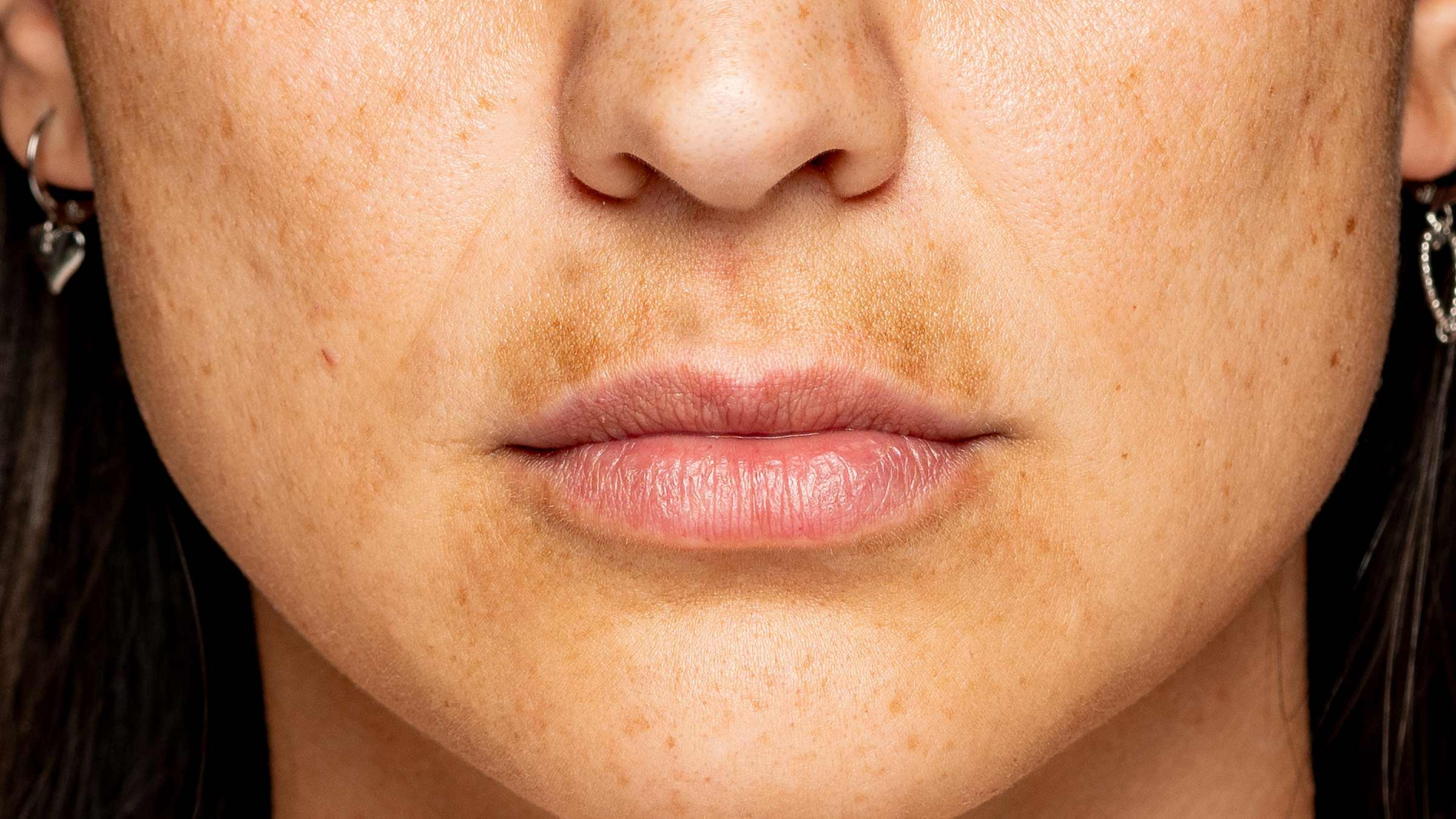Spending time in the summer sun? You could develop skin discoloration called ‘melasma mustache’

You likely know that protecting yourself from the summer sun can prevent skin cancer and help keep skin healthy. But you may not know it can also prevent a lesser-known condition called “melasma mustache.” While melasma mustache isn’t life-threatening, it can lead to changes in appearance that can be difficult to cope with. Read below for answers to common questions about the condition.
What is a melasma mustache?
Despite its name, melasma mustache has nothing to do with hair. Instead, it describes a pesky discoloration of the skin above the upper lip in the shape of a mustache. It’s caused by increased pigmentation in the skin. Melasma is common and seen routinely, but not everyone associates discoloration above the upper lip with melasma.
What causes melasma?
Melasma is caused by increased melanin in the skin related to a variety of different factors that can lead to skin darkening. These could include ultraviolet (UV) light exposure from the sun or tanning beds, hormonal changes (from pregnancy or the use of birth control pills with estrogen, for example), genetics/family history, certain medications, or other systemic conditions like thyroid problems.
Who does it affect and why?
Melasma more commonly affects women, particularly when related to fluctuating estrogen levels. It’s also much more noticeable in women due to the location of the discoloration, and women tend to be more bothered by the mustache-like appearance.
Skin type matters as well. This condition can be more challenging to treat and more persistent in skin of color, particularly in Asian, Hispanic and African American people.
How could the condition affect my health?
It’s important to note that melasma isn’t skin cancer. It has no effect on the body overall because it’s a localized darkening of the skin, but it can profoundly affect body image and self-esteem.
How would I know if I have melasma, and how is it diagnosed?
It will be very obvious if you have it, because you’ll see that persistent discoloration above the upper lip. Aside from discoloration, melasma has no signs or symptoms, so you won’t experience pain, itching, inflammation or other discomfort. However, you might begin to feel self-conscious.
The diagnosis is purely based on the clinical appearance.
How can I reduce the likelihood of melasma?
The most vital first step is to protect the area at all times from sun exposure. Avoiding sun and adhering to strict sun protection practices, such as daily sunscreen use, are key. Use a sunscreen that contains a mineral sunblock, such as titanium dioxide or zinc oxide, which physically block UV light. Be sure to reapply throughout the day. Seek shade (umbrellas, hats, etc.) whenever outdoors.
Also eliminate other triggers, if possible, by addressing related medications or considering alternative oral contraception.
During pregnancy, focus solely on sun protection and sun avoidance, because melasma may improve after delivery.
Are there any cures or treatments for melasma?
There is no cure for melasma. It can easily recur and worsen if the area is left untreated or exposed to UV light. If it recurs, it will likely arise in the same place it was before. When seeking treatment, it’s important to visit a board-certified dermatologist to help you explore your options.
Treatments include:
- Topical over-the-counter skin treatments, such as vitamin C, retinol or azelaic acid.
- Topical prescription skin lightening creams. These creams include active ingredients such as hydroquinone, which can decrease melanin production. Another option is a combination compounded skin lightening cream with hydroquinone, kojic acid and retinoids. When using these products, follow the instructions of your health care provider. More is not better. Prolonged or excessive use of hydroquinone can lead to a rare condition called exogenous ochronosis, a paradoxical darkening of skin from overuse of the product.
- Tranexamic acid, which can be used either in topical or oral form, also alters melanin production, leading to lightening of the skin.
- A series of chemical peels, if you have the right skin type. Peels should be avoided by patients with sensitive skin because they can cause irritation.
- Laser options geared toward addressing hyperpigmentation. These should only be done with a board-certified dermatologist or plastic surgeon skilled in laser technology.
Keep in mind that not all lightening products are created equal. If it overpromises, it will likely underdeliver, particularly with over-the-counter treatments. Furthermore, don’t overdo it with products. Doing so could actually exacerbate the condition by causing irritation that leads to more hyperpigmentation.
And be patient. This condition can be frustrating to treat, results will vary from person to person and it can very easily recur.
Does the condition worsen during certain seasons?
Yes. UV light exposure is the big culprit, and people get more sun exposure in summer months. However, you can also be affected by UV light on cloudy days or even in winter, so daily sunscreen is highly recommended year-round.

Routine visits to a dermatologist can lead to better skin health
Find out how the experts at Ohio State can help.
View services and schedule




